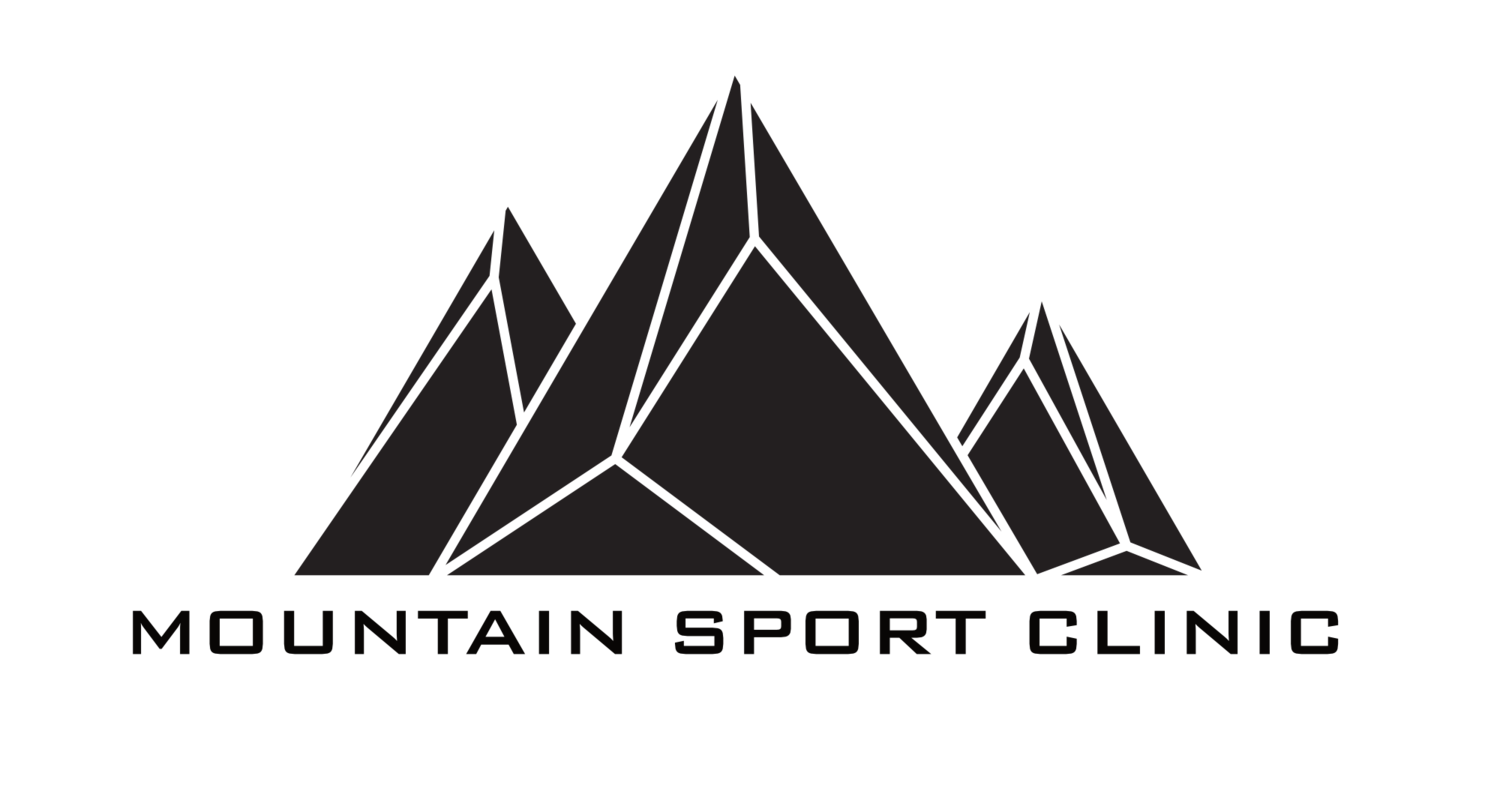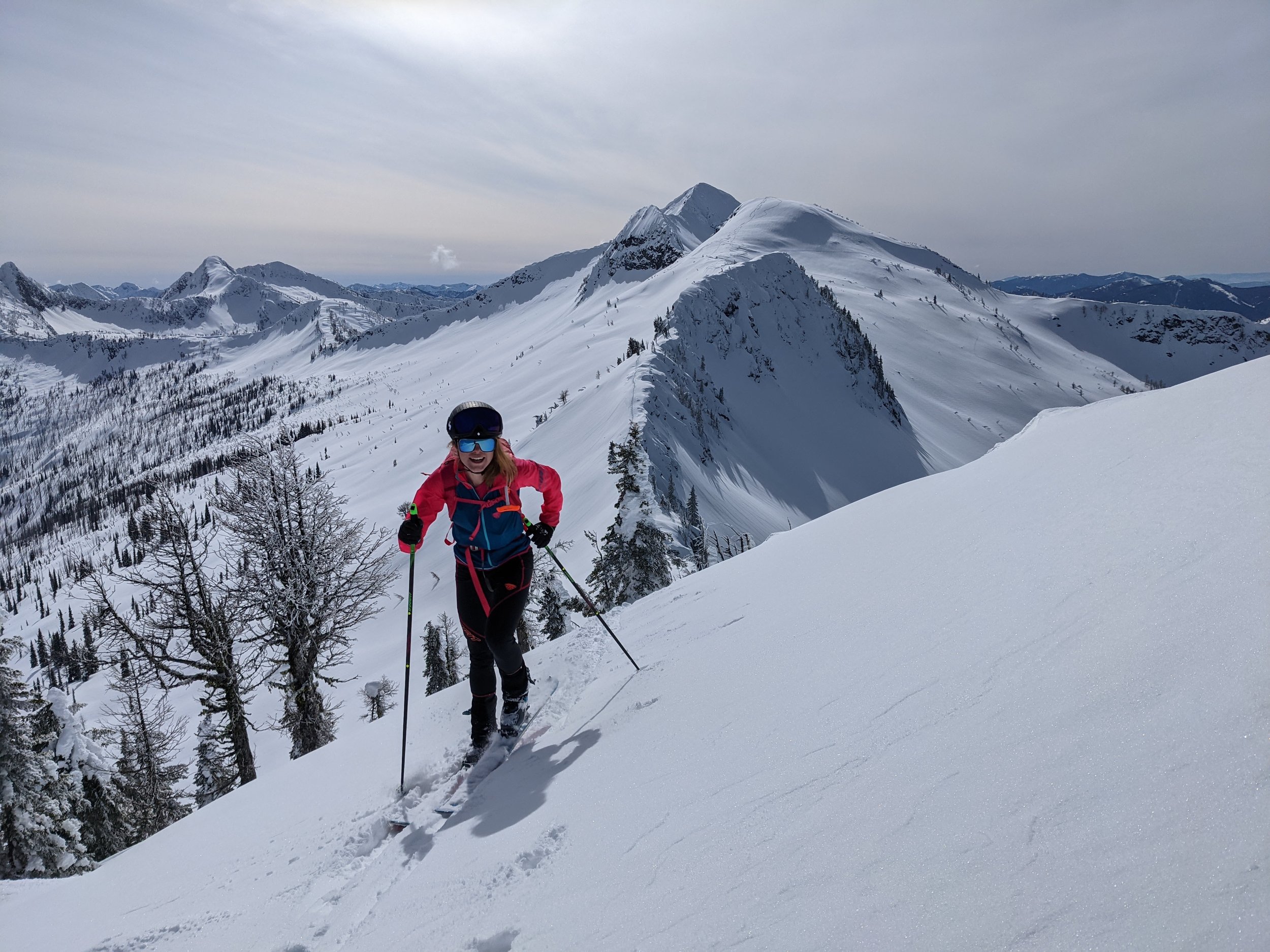Returning to the Scene of an Injury
Before diving into this piece, we would just like to put a trigger warning as there is discussion of a traumatic accident and injury. Please look after yourself if you choose to read this and have experienced traumatic injury in the past.
Lori’s Experience:
Two years ago, our Physiotherapist Lori Anne clipped a rock with a ski in a Ski Mountaineering Race Castle Mountain Resort and had a traumatic, aggressive, and season-ending crash. As she prepared to return to racing this fall, she began to experience flashbacks of the crash. Going back to the same racecourse for her first race back was a seemingly overwhelming task.
With the guidance of her Clinical Sports Counsellor, and with direction from Art Therapist Kat, Lori Anne set out to gradually increase her exposure to the terrain of her crash. Lori Anne’s plan was to first draw the crash location, look at the drawing and explore what emotions that brought up. She would then go to go to the terrain before the race and gradually increase her time there before skiing at race speeds. Due to avalanche closures, she was not able to go into the terrain itself before the race. Recognizing that her preparations to that point were not enough to feel comfortable racing, Lori Anne decided to explore the Art Therapy exercises more thoroughly.
When drawing the terrain, she thought through what feelings and emotions (both positive and negative) were associated with skiing that chute. She then identified what felt threatening in that environment and thought through strategies she could use to reduce or manage her reaction to those threats. Processing both her mind and body reaction before going into the terrain helped her be able to tackle the terrain with increased confidence, and most importantly with a plan that involved some personal control of the situation.
Kat’s Take:
Traumatic instances get stored in our nervous system. Our Nervous system’s job is to keep us safe and make us react when we do not feel safe, it is responsible for our fight, flight, or freeze response. In a situation like this, it makes total sense that Lori Anne’s nervous system would experience the location of her big accident as “not safe,” and therefore create a heightened mental and physical state which can feel like anxiety, racing thoughts, inability to think straight, or shut down/numbing. Her nervous system was doing its job!
In this case, Lori Anne was able to use the drawing to gently expose herself to the place where she had experienced the trauma, while remaining in a safe space physically. By gently visualizing the place of her accident, her nervous system reacted to the perceived threat and brought forward the feelings and anxieties related to that location. By using techniques to ground herself and calm her system - like deep breathing, positive self-talk, connecting with her support network, and staying present in her surroundings - Lori Anne was able to let her nervous system know that we she is now safe.
By going through this process, Lori Anne had integrated coping strategies with her traumatic memories. When she returned to Ski Mountaineering Racing, it was likely she would still experience a level of fear. This is only natural. Since this was not the first time for her to experience these feelings, she was able to use tools to ground herself when she started to feel overwhelmed. Without this prior process, it is highly possible that the experience of the crash may have flooded her mind and made her unable to continue.
Trauma reactions and fear of reinjuring are very common post injury recovery, although it is often not talked about in our current healthcare model. It is possible to soothe this fear and learn tools to regulate the nervous system in the face of this fear so that you can get back to doing what you love without the overwhelming fear. At Mountain Sport Clinic we aim to integrate the different pieces, mental and physical, related to injury recovery so that people can feel comfortable getting back to their sport without blocks.
Please Note - While it is possible to do exercises like this alone, many people need to work through these topics with the guidance of a trained professional. Lori Anne did so under the guidance of her Sports Counselor.



